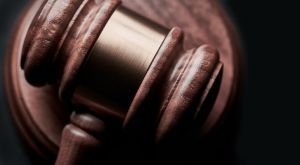- HOME
- > Blog Main Page
- > No Basis Left Unexamined: Federal Circuit Ruling Green Lights Expanded PTAB Review of Substituted Claims in IPR Proceedings
No Basis Left Unexamined: Federal Circuit Ruling Green Lights Expanded PTAB Review of Substituted Claims in IPR Proceedings
by Matt Digan
On July 22, 2020, in the case of Uniloc 2017 LLC v. Hulu, LLC,the Federal Circuit ruled for the first time that the Patent Trial and Appeal Board (PTAB) is not limited to considering § 102 and § 103 issues when evaluating substitute claims in an inter partes review (IPR), but is within its authority to consider §101 patent eligibility issues as well.[1] A petition to institute an IPR must still originate under § 102 or § 103 issues, and thus ruling only concerns the PTAB’s authority when evaluating substitute claims.[2]
Background
When the America Invents Act passed in 2011, it ushered in new procedures for challenging patent validity: including IPRs. Under 35 U.S.C. § 311(b), any person who is not the patent owner may file a petition with the U.S. Patent and Trademark Office (USPTO) seeking the cancellation of one or more claims of the issued patent arising under 35 U.S.C. §§ 102,103 grounds. In light of its intended structure as a less used and narrower supplement to the post-grant review (PGR) procedure, the IPR procedure in practice today is an unrecognizable creature of broad implementation rules that is used far more often than PGR.
During an IPR, the patent owner has a limited right to amend the patent by canceling one or more of the challenged claims and offering substitute claims.[3] The evaluation of the substitute claims by the PTAB lies at the heart of the decision in Uniloc 2017 LLC v. Hulu, LLC. If the IPR is not dismissed or the petitioner and patent owner do not come to an agreement, the PTAB will issue a final written decision regarding the patentability of the challenged claims and any new substitute claims.[4] This final written decision may then be appealed to the Federal Circuit.[5]
The Case
The patent at issue in this case owned by Uniloc is U.S. Patent No. 8,566,960 (the ‘960 patent) and is entitled “System and Method for Adjustable Licensing of Digital Products.”[6] The patent concerns the problem of consumers of software legitimately needing to use digital products on multiple devices.[7] The ‘960 patent teaches a method for adjusting the number of devices allowed to use a digital product (software) under license.[8]
Hulu filed a petition with the PTAB to institute an IPR of claims 1-25 of the ‘960 patent.[9] In response, Uniloc filed a Motion to Amend, seeking the substitution of claims 1, 22, and 25 with three new claims if the PTAB found the former claims unpatentable.[10] Hulu opposed the motion by arguing that the substituted claims were directed to patent-ineligible subject matter under §101.[11] Rather than argue based on the merits of its substituted claims, Uniloc’s response rested on the contention that Hulu was not permitted to raise a §101 argument in opposition to the new claims.[12]
In its written decision, the PTAB—in addition to explaining why the challenged original claims were unpatentable—denied Uniloc’s Motion to Amend on the grounds that Hulu had demonstrated by a preponderance of the evidence that the substituted claims were directed to non-statutory subject matter under § 101.[13] Ineligibility was the sole ground on which the PTAB rejected Uniloc’s Motion to Amend.[14]
On appeal to the Federal Circuit, Uniloc argued that the PTAB erred as a matter of law by grounding its rejection of Uniloc’s Motion to Amend on § 101 because the PTAB is limited in its evaluation of substituted claims to issues of anticipation or obviousness.[15] Uniloc’s appeal also concerned an issue of mootness, as there were parallel proceedings in the Eastern District of Texas while the IPR was proceeding at the USPTO, but that aspect of the case will not be covered in detail here. Suffice it to say that the Federal Circuit found that the case was not moot.[16]
The Federal Circuit rejected Uniloc’s argument and found that the text, structure, and legislative history of the IPR statutes indicate Congress’s unambiguous intent to permit the PTAB to review proposed substitute claims more broadly than those bases provided in § 311(b).[17]
First, the IPR statutes “plainly and repeatedly” require the PTAB to determine the “patentability” of proposed substitute claims.[18] The conditions of patentability are set out in three sections: §§ 101, 102, and 103.[19] Overall patentability concerns all three of those sections. It follows that a plain-language reading of the statute demonstrates Congress’s intention for the PTAB to review proposed substituted claims for overall patentability.[20]
Further, the Federal Circuit found that Uniloc’s contention that § 311(b) constrains the PTAB to review of only §§ 102 and 103 issues on proposed substituted claims is incorrect.[21] § 311(b) is confined to the review of existing claims at the time IPR is instituted, and does not apply to proposed substituted claims—the PTAB cannot “cancel” something that is not “of the patent” and that does not even exist yet.[22]
Second, the Federal Circuit found that the structure and legislative history of the IPR statutes supported its finding. In terms of structure, § 311 is a provision applying to the petition phase of the proceedings and should not then bind a separate adjudicative -stage provision, such as § 316.[23]
The Federal Circuit noted that reexamination proceedings—the predecessors to IPR—were limited to substantial new questions of patentability regarding an issued patent’s original claims on the basis of new information about preexisting technology that “escaped review” at the time of the initial examination.[24] Under an IPR, proposed substitute claims have not undergone a patentability review by the USPTO, and so the substantial new questions of patentability that have not previously been considered by the PTO include all patentability questions, including § 101 patent eligibility.[25]
Quoting the PTO, the Federal Circuit noted that, “if a patent owner seeking amendments in IPR were not bound by § 101 and § 112, then in virtually any case, it could overcome prior art and obtain new claims simply by going outside the boundaries of patent eligibility and the invention described in the specification.”[26]
Finally, the dissenting opinion in the case contended in direct contradiction to the majority that the majority opinion actually does not follow the plain language of the statute.[27] The dissenting opinion claimed that because the patent owner may only propose narrowed claims that address the issues raised in the petition, analysis of patentability under § 101 is not appropriate.[28] The effect of the majority’s ruling is going to be opening up substitute claims to examinations on par with full blown reviews undertaken during patent prosecution, but rather than being conducted by a patent examiner, they will be conducted by Administrative Patent Judges—an unforeseen and highly inefficient shifting of the “mammoth task of examining claims” to the litigation-driven IPR proceeding.[29]
Implications
It remains to be seen just how much of an impact this decision will have on IPR proceedings going forward, but it will be interesting to see how often § 101 is cited as grounds for rejecting substituted claims. At the very least, patent owners will now have to take into account § 101 issues when formulating substitute claims.
[1] Uniloc 2017 LLC v. Hulu, LLC, 966 F.3d 1295, 1303-1304 (Fed. Cir. 2020).
[2] 35 U.S.C. § 311(b).
[3] 35 U.S.C. § 316(d)(1)(A)-(B).
[4] 35 U.S.C. § 318(a).
[5] 35 U.S.C. § 319.
[6] Uniloc 2017 LLC, 966 F.3d at 1298.
[7] Id. at 1298-1299.
[8] Id.
[9] Id.
[10] Id. at 1300.
[11] Id.
[12] Id.
[13] Id.
[14] Id.
[15] Id. at 1303-1304.
[16] Id. at 1301.
[17] Id. at 1304.
[18] Id.
[19] Id.
[20] Id.
[21] Id.
[22] Id. at 1305.
[23] Id.
[24] Id.
[25] Id. at 1305-1306.
[26] Id. at 1306.
[27] Id. at 1311.
[28] Id. at 1314.
[29] Id. at 1316.

TAGS:
